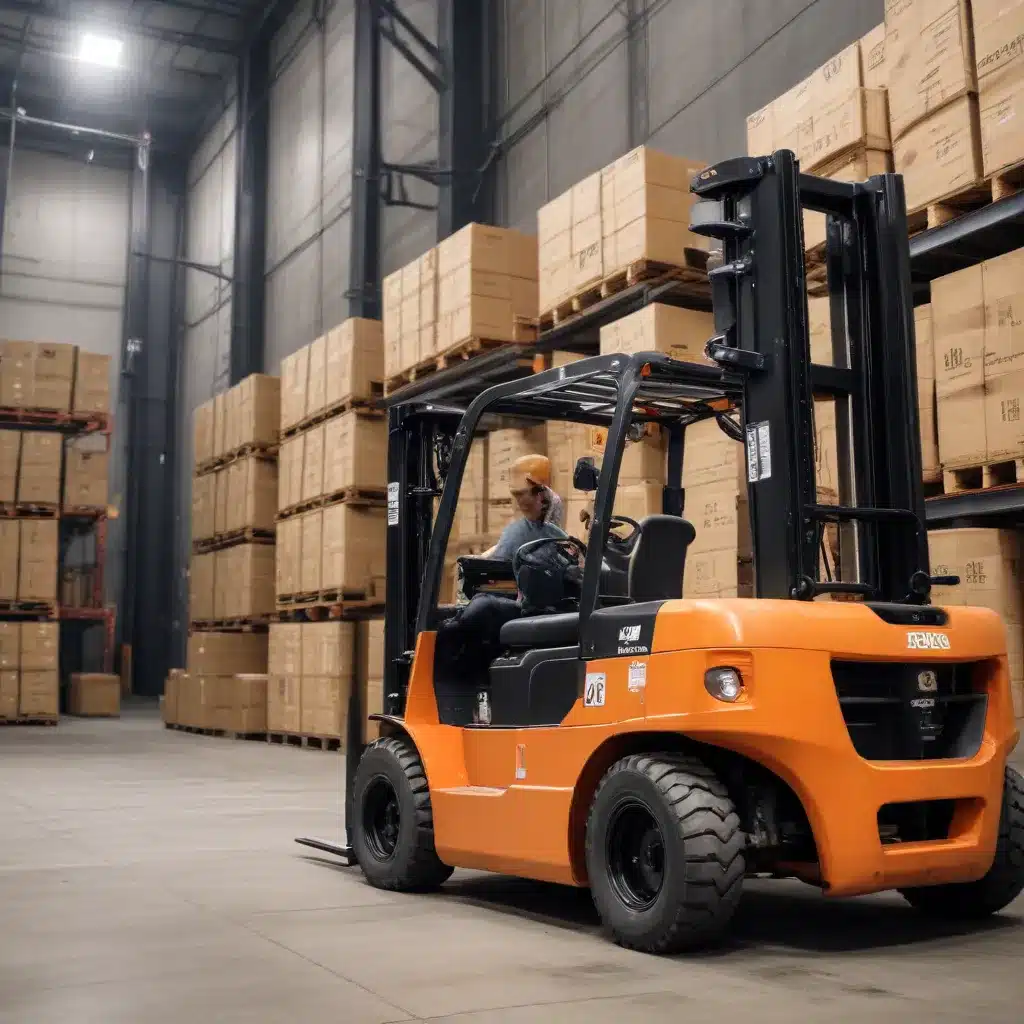
Understanding Forklift Load Capacity
As an experienced industry expert in forklifts, warehousing, and logistics, I understand the critical role that load capacity plays in ensuring efficient and safe operations. Forklift load capacity is a crucial specification that directly impacts a business’s ability to maximize productivity, minimize costs, and maintain the highest safety standards.
A forklift’s load capacity refers to the maximum weight it can safely lift and transport. This metric is typically displayed on a forklift’s data plate and is determined by factors such as the vehicle’s size, design, and overall stability. Exceeding a forklift’s load capacity can lead to serious accidents, equipment damage, and costly downtime.
Factors Affecting Forklift Load Capacity
Several key factors influence a forklift’s load capacity, and it’s essential for operators and logistics professionals to understand these considerations:
-
Forklift Size and Lifting Mechanism: Larger, more powerful forklifts generally have higher load capacities compared to their smaller counterparts. Additionally, the type of lifting mechanism, such as counterbalance or reach forklifts, can affect the maximum weight the machine can safely handle.
-
Load Configuration: The way the load is configured and distributed on the forklifts’ tines can significantly impact the overall stability and load capacity. Properly balancing the weight and maintaining the center of gravity is crucial.
-
Terrain and Operating Conditions: The surface conditions, inclines, and other environmental factors in the warehouse or facility can affect a forklift’s stability and, consequently, its load capacity. Operators must be aware of these variables and adjust their handling techniques accordingly.
-
Operator Experience and Training: Skilled, well-trained forklift operators are better equipped to assess load limits, identify potential hazards, and operate the equipment safely, maximizing the forklift’s load capacity without compromising safety.
By understanding these factors, warehouse and logistics professionals can make informed decisions about their forklift fleet, ensure proper load planning, and implement effective training programs to optimize efficiency and safety.
Strategies for Maximizing Forklift Load Capacity
Maximizing forklift load capacity is crucial for enhancing overall operational efficiency, reducing costs, and maintaining a safe work environment. Here are some key strategies to consider:
1. Optimize Warehouse Layout and Space Utilization
Careful planning of the warehouse layout and storage solutions can significantly impact a forklift’s load capacity and overall efficiency. Strategies such as selective pallet racking, drive-in/drive-through racking, and pallet flow systems can help maximize vertical space utilization while ensuring easy access and stable load placement.
Warehouse managers should also consider the dimensions and weight of the stored materials, such as super sacks or Flexible Intermediate Bulk Containers (FIBCs), when designing the storage layout. Proper placement and stacking techniques can prevent point loading, which can compromise the structural integrity of the racking system and lead to potential safety hazards.
2. Implement Effective Load Planning Practices
Effective load planning is a critical component of maximizing forklift load capacity and optimizing overall transportation efficiency. By considering factors such as weight distribution, freight compatibility, and regulatory compliance, logistics professionals can strategically arrange shipments to fill trailer space while ensuring safe and secure transportation.
Leveraging technologies like load planning software and real-time tracking can provide valuable insights to enhance decision-making, optimize load distribution, and prevent overloading incidents. Additionally, fostering open communication between shippers and carriers can help streamline the load planning process and identify opportunities for improvement.
3. Maintain Forklift Inspection and Preventive Maintenance
Regularly inspecting and maintaining forklifts is essential for ensuring their optimal performance and preserving load capacity. Adherence to manufacturer recommendations, industry standards, and local regulations regarding forklift maintenance and inspections can help identify and address any issues that could impact load capacity or safety.
By implementing a comprehensive preventive maintenance program, organizations can extend the lifespan of their forklift fleet, reduce the risk of breakdowns, and maintain their equipment’s load capacity and stability. This, in turn, helps minimize downtime, avoid costly repairs, and maintain a safe working environment for operators and warehouse personnel.
4. Prioritize Operator Training and Safety Protocols
Properly trained and experienced forklift operators are crucial for maximizing load capacity and maintaining a safe work environment. Comprehensive training programs that cover load capacity considerations, load balancing techniques, and safe operating procedures can empower operators to make informed decisions and handle loads effectively.
In addition to operator training, businesses should establish clear safety protocols, including load capacity guidelines, signage, and regular safety audits. By fostering a culture of safety and accountability, organizations can ensure that forklift load capacity is respected, and the risk of accidents or equipment damage is minimized.
Balancing Cost, Efficiency, and Safety
Optimizing forklift load capacity requires a careful balance between cost-effectiveness, operational efficiency, and safety. While some solutions, such as automated storage and retrieval systems (ASRS), may have higher upfront costs, they can offer long-term savings through increased productivity, reduced labor requirements, and improved inventory management.
On the other hand, more basic storage solutions, like floor stacking or selective pallet racking, may be more cost-effective but may compromise on efficiency or safety if not properly designed and implemented. Warehouse managers must weigh the tradeoffs and choose the storage solutions that best align with their specific operational needs, budget, and safety priorities.
Regardless of the approach, maintaining a strong focus on safety should be a top priority. Adhering to industry regulations, conducting regular safety audits, and ensuring proper maintenance and training can help prevent costly accidents and protect the well-being of employees.
By adopting a comprehensive, strategic approach to forklift load capacity management, businesses can unlock significant operational and financial benefits while upholding the highest safety standards. Leveraging the expertise of industry professionals and staying informed on the latest trends and best practices can be invaluable in this pursuit.
To learn more about optimizing your forklift fleet and warehouse operations, visit Forklift Reviews – your go-to resource for industry insights, product reviews, and practical solutions.

